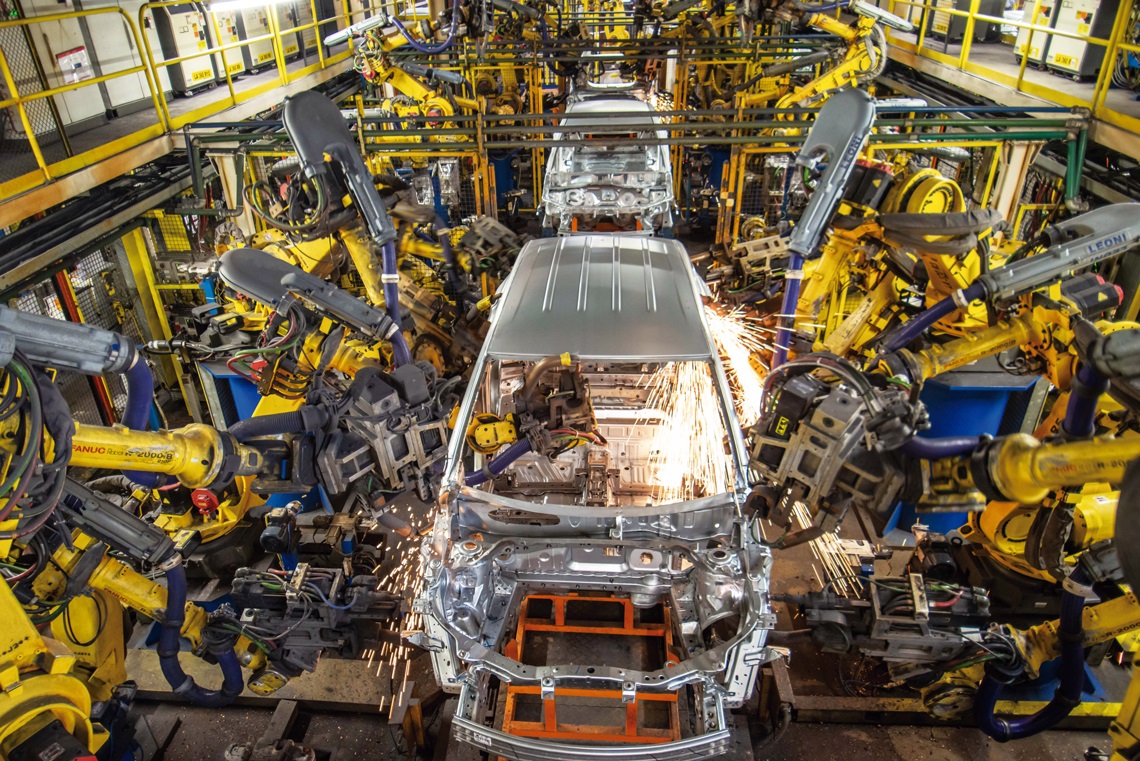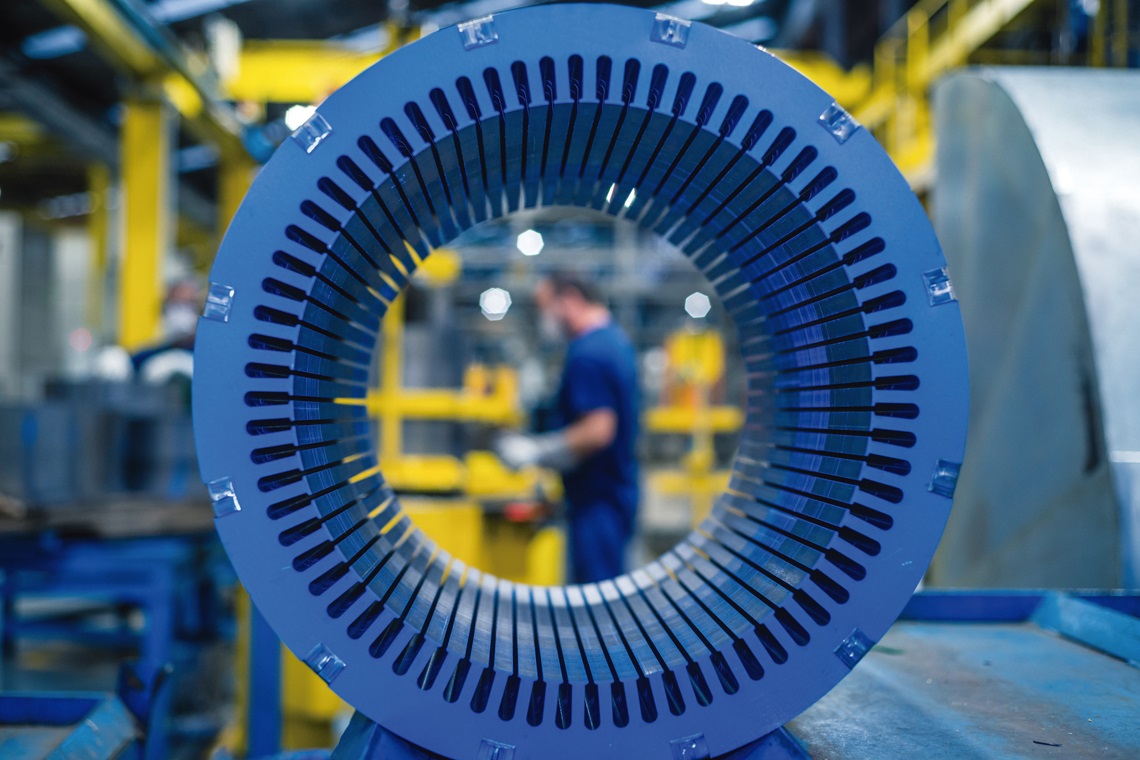A multistakeholder group of economists and researchers from the Brazilian Senate, the Institute of Geography and Statistics (IBGE), and other institutions has proposed a new approach to measuring innovation impact that focuses on top-performing firms in both innovation and job growth. The method uses data that Brazilian companies periodically submit to the IBGE’s Innovation Survey (PINTEC) and Central Companies Register (CEMPRE).
According to their study, published in September in Revista Brasileira de Inovação, out of a total of 100,000 Brazilian firms with more than 10 employees, approximately 9,000 companies reported headcount growth per year of more than 20% from 2008 to 2014. During this period, between 43% and 49% of these firms produced some form of innovation. Using statistical analysis, the authors have created a family of indicators that they have dubbed Dinnov — an abbreviation for “dynamic,” i.e., high-growth, and “innovative” — to measure the contributions to the economy from firms meeting these two criteria. The series comprises four different indices that the authors believe are easier to understand than other existing metrics. The Dinnov-empresas index, for example, measures the number of high-growth and innovative companies out of the total number of firms. Similarly, the Dinnov-emprego index is the ratio of the headcount of innovative firms to that of total firms. Dinnov-valor adicionado measures the wealth created by high-growth and innovative firms. The fourth index, called Dinnov-Simplex, measures the economic contribution from high-growth and innovative firms, estimated in terms of the innovation rate times the high-growth rate in a given country.

CNH IndustrialA CNH Industrial distribution center in SorocabaCNH Industrial
“Ultimately, the question we want to answer is: what part of economic activity or growth is driven by innovation?,” says economist Eduardo Baumgratz Viotti, a legislative advisor to the Federal Senate on science and technology policy and the lead author of the paper. He notes that innovation-driven economic progress often comes through greater productivity and competitiveness and that combining these two attributes — high growth and innovation — into a single index could be useful for measuring the benefits for the economy and society. “Economic growth and innovation combine to create a virtuous cycle. Innovation drives business growth and new business creation. Growing businesses have the means and the opportunity to innovate. But for firms that are not growing it’s a struggle for survival, and they often have limited resources to invest in new products and processes.”
To test their methodology, the research group compared data on Brazil to data on 16 European countries, and the results were surprising. Because the data from the PINTEC survey were for a period when Brazil enjoyed strong economic growth, from 2008 to 2014, the country scored particularly well in the index. During this period, the average Dinnov-Simplex value for Brazil was estimated at 2.5%, more than twice the average for European countries at 1.1%. However, the gap is not explained by higher innovation rates in Brazil than in European countries, which were similar at 36.7% and 36.3%, respectively. Instead, Brazil’s exceptional performance is explained by a 6.9% rate of high-growth companies during the survey period, compared to only 1.9% on average for the European countries included in the comparison. “Brazil’s economy grew at an average rate of 3.1% per year, more than 10 times higher than the average for the 16 European economies we analyzed,” says Viotti.

EmbraerAn Embraer aerospace engineer in São José dos CamposEmbraer
He recognizes that further research is needed to validate the methodology. “This exercise has proven that the new metrics work, but additional research covering a longer time horizon and a larger number of countries will be needed to validate our proposed methodology,” he says. Due to a lack of data, the researchers were unable to test the new metrics for the recent period of economic contraction. The most recent PINTEC survey, for 2017, was only published in 2021 (see Pesquisa FAPESP issue nº 291). In the survey for the period 2015-2017, Brazilian companies had an average innovation rate of 33.6%, down from 36% in the previous survey for the period 2012-2014. The 2018-2020 survey has yet to be conducted. “The PINTEC survey’s historical series goes back to 2000 but has recently been affected by the IBGE’s tightening budget,” notes Viotti.
The idea to create an index focused on innovative and high-growth firms emerged within a broader discussion around the challenges of compiling metrics to effectively inform policy-making. Many of the conventional metrics have known limitations. One example is the ratio of research and development (R&D) investment to gross domestic product (GDP). “The world’s top manufacturing countries have strong R&D capabilities and high and growing R&D spending. But these metrics are recognized to be limited in their ability to account for the broad set of activities and interactions involved in the innovation process,” says economist Sandra Hollanda, an advisor to a FAPESP program that is building a framework of science, technology and innovation metrics for the state of São Paulo.

PetrobrasA Petrobras Research, Development, and Innovation Center in Rio de JaneiroPetrobras
Eduardo Viotti says that there is now a consensus as to why Brazil has made little progress in innovation despite the country’s growing scientific output. “While innovation has been increasingly a focus of discussions, plans, programs, and policies, it appears we have yet to figure out how to develop effective innovation policies. Part of the problem may be a legacy from past policies designed around the simplistic assumption that a virtually direct relationship exists between R&D investment and innovation outcomes,” he explains. The approach to assessing R&D investment since the 1960s was refined in the 1992 “Oslo Manual” — a set of guidelines for collecting and interpreting innovation data published by the Organization for Economic Cooperation and Development (OECD). This manual, which has been adopted in more than 80 countries, describes the diverse types of innovation and their attributes.
In the past decade, the debate on how best to measure innovation impact gained new impetus when the European Union (EU) decided to create new metrics of its own. The rationale for the proposed model was that firms are the arena where innovation takes place. However, they are dependent on public and private infrastructure, collaboration between universities, corporations, and other partners, legislative support, and a favorable economic environment. The policy-makers’ goal with the new metrics was to equip EU member countries to compete with the US and Asian economies. Their approach combines R&D investment targets with a metric for innovation outcomes. In 2010, the European Commission organized a high-level panel of economists, statisticians, and business leaders to design a framework for measuring the contributions to the economy from innovative enterprises. The panel also aimed to develop metrics for demonstrating the practical outcomes of innovation and its impacts on society. “The EU had intended to break away from compound, multicomponent indicators, which while useful for communicating with and gaining support from the public and for international benchmarking, are not as useful for informing policy-making,” explains Hollanda.

General MotorsA General Motors plant in São Caetano do SulGeneral Motors
However, after extensive discussions, the panel ultimately arrived at a multicomponent metric that includes patents, high-skill jobs, high-growth companies, knowledge-intensive exports, and other components. The proposed methodology drew significant criticism. Due to the limited availability of data, many components were still based on innovation inputs rather than practical outcomes. “Furthermore, recent developments such as the advent of global supply chains and the digital economy were not well factored into the EU’s indicators for jobs and exports,” says Sandra Hollanda.
The Dinnov index family was designed to revive the EU’s original goal of developing a simpler model and one based on innovative and high-employment firms. André Tosi Furtado, an economist in the Department of Science and Technology Policy (DPCT) at the University of Campinas (UNICAMP), says the new index series can be useful for tracking firms’ performance over time, but he sees obstacles to meeting some of its other goals. One issue is in international benchmarking. “It seems problematic to compare the development of products, processes, or services between Brazil and European countries. It is likely that the definition of innovation is different in Brazil than, say, in Denmark,” says Furtado. “Metrics such as the innovation rate may not accurately reflect firms’ innovation performance. While efforts have recently been made to distinguish products or processes that are innovative only within the firms that developed them from those that are innovative at a national or global level, this distinction has not been made in the Dinnov index series,” he adds.
Furtado also notes that the innovation rate indicator may not be sufficiently sensitive for a rigorous assessment. “This is the issue that many had with the ‘Oslo Manual.’ The EU’s new product metric has avoided using this methodology, but it is still present in the Dinnov series.” The reason the European Union chose a composite indicator to measure innovation outcomes, explains Furtado, was likely to account for the myriad aspects involved in the complex process of innovation.
Republish